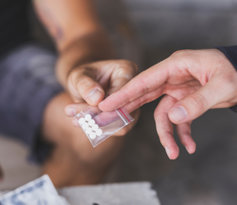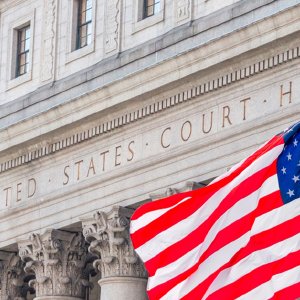Michigan Healthcare Scheme Involved Opioids

A recent case out of Michigan acts as a reminder of why patients should proceed with caution when it comes to opioid painkillers. Such drugs are addictive, and, once in a while, a doctor may seek to profit off of their addictive nature.
Details of the Case
In January 2023, Detroit-area doctor Frank Patino was sentenced to nearly 17 years in federal prison and ordered to pay $30 million for the following crimes:
- Leading a scheme to bill Medicare for unnecessary painkiller injections.
- Leading a scheme to bill several private insurers for similar “patient services.”
- Writing prescriptions for millions of opioid painkillers, far more than his patients needed.
According to prosecutors, Patino’s scheme was in play for at least five years (five years is what the prosecution could prove in court). “Over the course of approximately five years, Patino steadily increased the potency of the opioids he prescribed, ultimately making him the top prescriber of 30-milligram oxycodone within the state of Michigan,” said Justice Department attorney Steven Scott in a court filing. According to Scott, the result was that Patino got rich while his patients became addicted to the very drugs that Patino was telling them would help them.
The case made headlines because it is unusual for a reputable doctor to be sentenced to 17 years in federal prison and fined $30 million in restitution to Medicare and other insurers. Unfortunately, while very few doctors engage in illegal behavior with opioids with their patients, when it does happen, the effects are devastating.
Just 1 Percent of Doctors are Still Responsible for Almost Half of all Opioid Doses Prescribed

While the case of Frank Patino is certainly egregious, it’s important to point out that the vast majority of doctors have become more conservative in their prescribing in recent years. However, some still prescribe far too much. For example, 1% of doctors prescribe about half of all annual opioid doses, and they write about one-quarter of all prescriptions. While that means most doctors are prescribing in a way that aligns with the Centers for Disease Control and Prevention's recommendations on prescribing, it still means there are hundreds of doctors who are doling out far too many prescriptions for these highly addictive pharmaceuticals.
Though prescribing rates have fallen from their peak in the late 2000s and early 2010s, per capita prescribing rates in the U.S. are still much higher than in other developed nations. According to one body of research conducted by the National Institute on Drug Abuse, 669,495 providers wrote about 8.9 million prescriptions, corresponding to 8.2 billion opioid morphine milligram equivalents (MME) to 3.9 million patients per year between 2003 and 2017. Those figures correspond to 700 MME daily for each provider and more than 120 MME a day for each patient, which is still quite high despite a decline in recent years.
What the researchers found next was quite alarming. Nearly half (49%) of all opioid doses and 27% of all opioid prescriptions came from just 1% of the doctors examined in the study. Further, the 1% prescribed many higher-strength opioids, with about half of the prescriptions written by doctors in that group far exceeding the CDC-recommended daily threshold of 50 MME. Last but not least, this group of doctors wrote prescriptions that, in 98% of instances, were for longer durations than the CDC-recommended seven days.
Just as it’s a small percentage of doctors doing a huge amount of the prescribing, it's a relatively small percentage of patients who are receiving the largest doses of opioids. Case in point, the top 1% of patients who received the most opioids received 28% of all opioids prescribed during the study period. More than two-thirds of this patient group received their opioids from doctors who were in the top 1% of subscribers, indicating what seems to be a very harmful relationship between the top 1% of doctor-prescribers and the top 1% of patient-consumers.
Addiction is a Known Side Effect of Opioid Pharmaceuticals

Addiction is a known side effect of opioid pharmaceuticals, and while a 2021 study showed opioid prescribing had declined 44% from its peak one decade prior, opioid overdoses are still climbing. That is because millions of Americans became hooked on opioids when doctors were more readily prescribing them. As doctors began limiting their prescribing when irrefutable evidence showed patients were getting hooked on their meds, patients who were already hooked went looking for opioids elsewhere, instead finding heroin, fentanyl, and other synthetic opioids.
There is a direct link between taking more opioids, more often, and for longer durations, and an increase in one’s risk of becoming addicted to those opioids. One of the reasons why the Patino case is so alarming is because Patino was intentionally dosing up his patients on more opioids, knowingly causing patients to become addicted to drugs to boost his profits.
Conservative prescribing is a must because only by prescribing patients the lowest dosage possible for the lowest duration possible can doctors help their patients avoid addiction. Even then, doctors should only prescribe opioids as a last resort after other pain relief methods have been tried.
Treatment is Needed When Patients Become Addicts
While it is true that patients are less likely to experience negative results when they take opioids as prescribed, it's also true that even taking opioids in small doses and for short durations poses some risk. When people become addicted to opioids, they must get help as soon as possible. Opioid addiction does not go away on its own.
If you know someone who is addicted to opioids or other drugs, please help them find and enter a qualified drug addiction treatment center as soon as possible. Please don’t wait until it is too late.
Sources:
- USNews. “Doctor Gets Nearly 17 Years in Prison for Vast Opioid Scheme.” U.S. News, 2023. usnews.com
- NIDA. “Skewed Opioid Prescribing Patterns in the United States—A Few Providers Prescribe a Large Proportion of Opioids.” National Institute on Drug Abuse, 2021. archives.nida.nih.gov
- CDC. “Guideline at a Glance.” Centers for Disease Control and Prevention, 2023. cdc.gov
- AMA. “Report shows decreases in opioid prescribing, increase in overdoses.” American Medical Administration, 2021. ama-assn.org


 ®
®